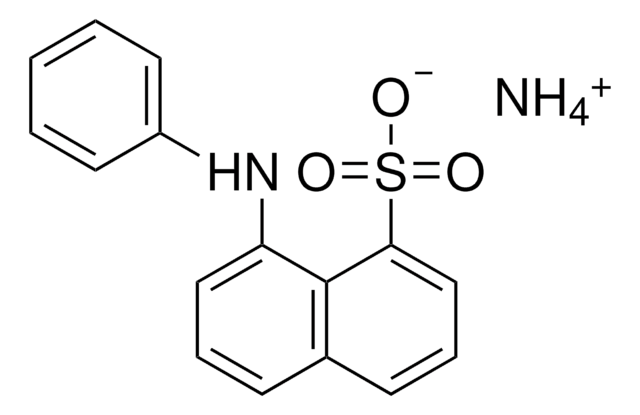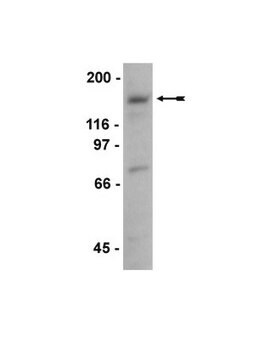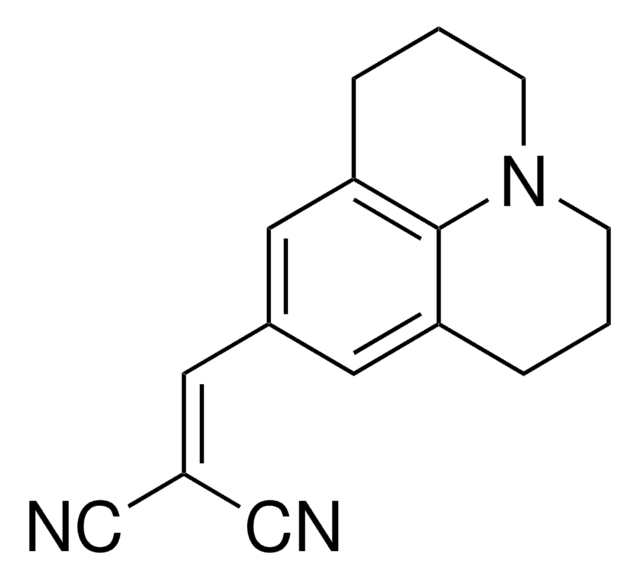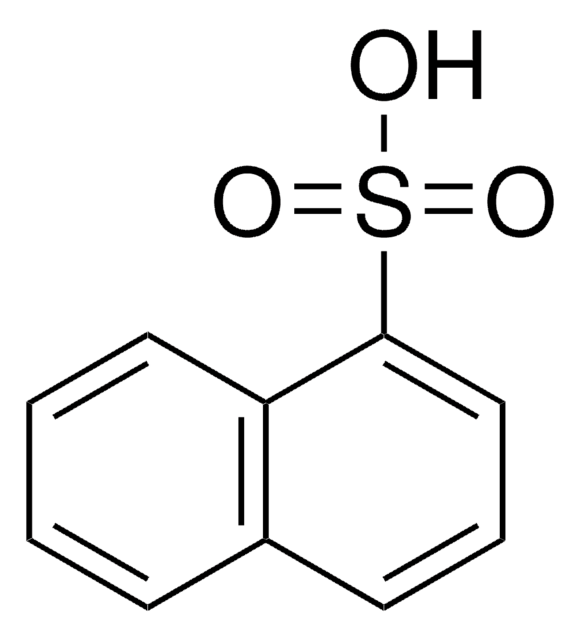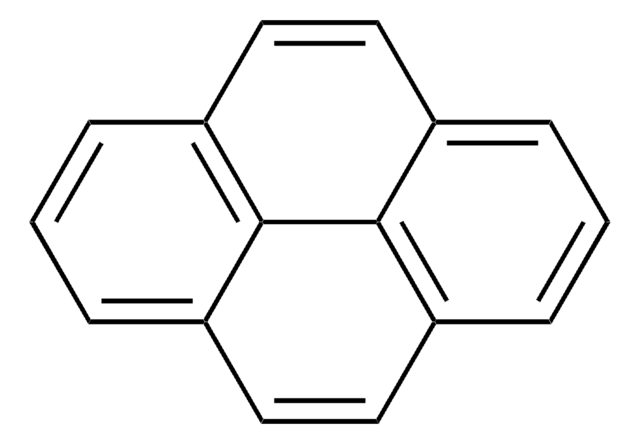추천 제품
제품명
8-Anilino-1-naphthalenesulfonic acid,
분석
≥97% (HPLC)
Quality Level
양식
powder
구성
, <0.5% (solvent)
색상
black
gray to dark green
mp
215-217 °C (dec.) (lit.)
solubility
DMF: 50 mg/mL
응용 분야
diagnostic assay manufacturing
hematology
histology
저장 온도
room temp
SMILES string
OS(=O)(=O)c1cccc2cccc(Nc3ccccc3)c12
InChI
1S/C16H13NO3S/c18-21(19,20)15-11-5-7-12-6-4-10-14(16(12)15)17-13-8-2-1-3-9-13/h1-11,17H,(H,18,19,20)
InChI key
FWEOQOXTVHGIFQ-UHFFFAOYSA-N
유사한 제품을 찾으십니까? 방문 제품 비교 안내
애플리케이션
8-Anilino-1-naphthalenesulfonic acid (ANS) has been used to study the thermal aggregation of BSA (bovine serum albumin).
생화학적/생리학적 작용
8-Anilino-1-naphthalenesulfonic acid (ANS) is an important dye which is used to study the intermediate states in the folding/unfolding pathways of proteins. It is also useful to check the conformational changes involved with the aggregation of proteins. ANS is nonfluorescent in the aqueous solution, however, it fluoresces strongly upon binding to BSA (bovine serum albumin) and denatured proteins. It is used for the detection of albumin in the serum. ANS mainly interacts with the solvent exposed nonpolar (hydrophobic) sites.
Storage Class Code
11 - Combustible Solids
WGK
WGK 3
Flash Point (°F)
Not applicable
Flash Point (°C)
Not applicable
이미 열람한 고객
Thermal aggregation of glycated bovine serum albumin.
Rondeau P, et al.
Biochimica et Biophysica Acta, 1804, 789-789 (2010)
Thermal aggregation of bovine serum albumin at different pH: comparison with human serum albumin.
Vetri V, et al.
European Biophysics Journal, 36, 717-717 (2007)
Uversky VN and Permiakov EA
Methods in Protein Structure and Stability Analysis (2007)
Lauren E Schrock et al.
Movement disorders : official journal of the Movement Disorder Society, 30(4), 448-471 (2014-12-06)
Deep brain stimulation (DBS) may improve disabling tics in severely affected medication and behaviorally resistant Tourette syndrome (TS). Here we review all reported cases of TS DBS and provide updated recommendations for selection, assessment, and management of potential TS DBS
Irem Nasir et al.
PloS one, 10(8), e0136687-e0136687 (2015-08-28)
The interactions of biological macromolecules with nanoparticles underlie a wide variety of current and future applications in the fields of biotechnology, medicine and bioremediation. The same interactions are also responsible for mediating potential biohazards of nanomaterials. Some applications require that
자사의 과학자팀은 생명 과학, 재료 과학, 화학 합성, 크로마토그래피, 분석 및 기타 많은 영역을 포함한 모든 과학 분야에 경험이 있습니다..
고객지원팀으로 연락바랍니다.